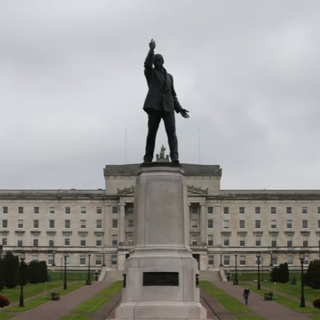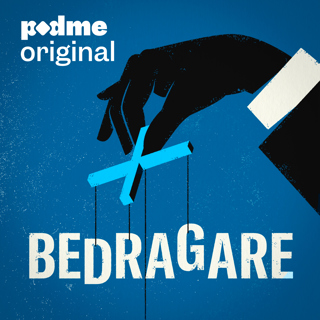
199. Unaffordable, looming wars
We saw last week that Britain wasn’t in any fit state to go fighting more wars in 1919. Having got out of the bloodiest war in history (up to then), a deep war-weariness had set in amongst the combatants, and no one felt up to more fighting. The British economy too was in no state to stand another war, what with Britain heavily in debt, to the point where its status as the banker to the world was now swiftly going down the pan. Indeed, the country taking over that role, the United States, was the very country to which a quarter of Britain’s war debt was due. Everything was made much worse by the fact that war seemed to be brewing in every direction. The very collapse of the Empires defeated in the Great War – the Russian, the Austro-Hungarian and the Ottoman – had produced a different and highly unstable constellation of potentially conflicting nations. For Britain, one of the areas where war most threatened, was on its very doorstep – in Ireland. A subject we’ll pick up next week. Illustration: Woodrow Wilson, US President who dreamed up the League of Nations but couldn't get his own nation to join. Public domain. Music: Bach Partita #2c by J Bu licensed under an Attribution-NonCommercial-No Derivatives (aka Music Sharing) 3.0 International License.
16 Juni 202414min

198. Unfit for heroes
At the end of the First World War, a devastating worldwide flu pandemic killed perhaps as many as 50-100 million around the globe, and even 228,000 in Britain. That was a cruel addition to the 880,000 lost to the war itself. Despite that blow, Lloyd George’s government did what it could to realise its objective of making Britain a ‘land fit for heroes’. That meant moving on with the programme of social reforms he’d already launched before the war. He made considerable progress in health, education, pensions and housing. However, Lloyd George was a Liberal Prime Minister in a Tory-dominated government. That imposed serious limitations on how far he could take a radical programme. This was made worse by the economic downturn that hit the world economy in 1920. The Conservatives, never very keen on all this social radicalism, became increasingly concerned about Lloyd George when economic conditions it more difficult than ever to finance the kind of public spending that his reforms required. The Prime Minister, coming under growing pressure from his Conservative partners, tried to placate them by dumping a Minister most associated with this high spending, even though he was an important ally to him. Christopher Addison, perhaps the most distinguished medic ever to become a Member of the British Parliament, was driven from his position and soon afterwards resigned. Something similar happened with Edwin Montagu who, as Secretary of State for India, had begun to introduce a programme of political reform there. Confused and far too limited, it was still a well-intentioned initiative, hated by the arch-imperialists, such as the Conservative MPs who had backed General Dyer, the man responsible for the Amritsar massacre. Eventually, Montagu too had to go. The trouble was that throwing raw allies to the Tory so-called diehards in this way didn’t blunt their growing opposition to him. It did, however, deprive him of much-needed support. Illustration: Christopher Addison in 18917, by Walter Stoneman, National Portrait Gallery x67932 (left), and Edwin Montagu, public domain. Music: Bach Partita #2c by J Bu licensed under an Attribution-NonCommercial-No Derivatives (aka Music Sharing) 3.0 International License.
9 Juni 202414min

197. White Man's Burden
Rudyard Kipling’s poem, The White Man’s Burden, is a song of praise to the selflessness of the white man who goes out to the lands of benighted savages and gives them the benefits of his wisdom and kind, if stern, governance to protect them from their own savagery. Sadly, when we take a closer look at imperialism, we find a rather different picture. That’s anyone’s imperialism and not just the British version. This episode looks at the impact of the Spanish and Portuguese in what would become Latin America, as well as the US in the Philippines (powerfully denounced by Mark Twain). But it concludes in India, and the incident that became the turning point for Indian political leaders, previously loyal to the Empire, but convinced by that innocent that British rule had to be ended. One of the key aspects of that incident, an obscene massacre followed by further severe oppression, was that the perpetrator faced little sanction in Britain, while the victims in India received little help. It’s no surprise that the stark contrast caused faith in British fair play to crumble. The growing resistance to British power wasn’t the reaction the perpetrators had hoped for, but it’s the reaction they should have expected. Illustration: Jawaharlal Nehru and Mohandas Ghandi. Public domain. Music: Bach Partita #2c by J Bu licensed under an Attribution-NonCommercial-No Derivatives (aka Music Sharing) 3.0 International License.
2 Juni 202414min

196. An independent Ireland?
The 1918 election was a disaster for the Liberal Party. Although Lloyd George’s faction, inside the coalition government with the Conservatives, took 127 seats, the Liberals independent of the coalition only won 36. Asquith himself, their leader, even lost his seat. The Conservatives saw a huge surge in their number of MPs and could have formed a government themselves. For the time being, though, they stuck with Lloyd George, seen by many as ‘the man who won the war’. The biggest defeat was for the traditional nationalist MPs from Ireland, thrashed by Sinn Fein, backers of an independent Irish Republic. The Nationalists were reduced to 7 seats while Sinn Fein won 73. One of these was taken by the first woman to win a seat in the British parliament, the Easter Uprising veteran Constance Markievicz. However, neither she or any of the 72 other Sinn Fein MPs took their seats, instead calling a meeting of the first ever Dáil Eireann in Dublin, the first Irish parliament. Over the next year and a half or so, there would be some violent incidents in a growing Irish War of Independence. The most threatening development for the British Empire, though, was how Sinn Fein began to build an independent government, increasingly winning allegiance from the population in the south and west. The British sent increased forces, many of them ex-soldiers, but fighting only really took off from the summer of 1920. A matter we’ll return to in a later episode. Illustration: Countess Markiewicz, Easter Uprising veteran, first woman elected to the British Parliament, one of the first women to become a cabinet minister in Europe. Music: Bach Partita #2c by J Bu licensed under an Attribution-NonCommercial-No Derivatives (aka Music Sharing) 3.0 International License.
26 Maj 202414min

195. Empires collapsing, women voting, a coalition campaigning
The return of peace after the First World War might have heralded the arrival of a time of tranquillity. Sadly, it didn’t. Too much had changed. Four empires, three venerable and one an unpstart, had collapsed: Turkey’s Ottoman Empire, the Russian Empire and the Austro-Hungarian Empire were the longstanding ones, and the German Empire, most powerful of all four, was the upstart that had shared the same fate. In Britain, Lloyd George, basking in his reputation as ‘the man who won the war’, was nonetheless in a precarious position as the Liberal leader of a Conservative-dominated government. He decided to bring in a major electoral reform, the Representation of the People Act of 1918, and then go to the country at the head of his coalition – that is, the two parties in the coalition campaigning together, rather than as separate organisations which might well form a coalition afterwards, if the election results made that necessary. The electorate he faced had been greatly increased by his reform, including over five million more men but also, and this was the major innovation, for the first time, over eight million women. At last, the suffrage movement had broken through, but no thanks to the Suffragettes – Emmeline Pankhurst’s WSPU had stopped campaigning for the vote when war broke out. The much bigger organisation, of Suffragists, the NUWSS led by Millicent Fawcett, played a much more significant role. It too, though, had been convulsed by the war, breaking with the peace movement to retain the support of more nationalist individuals, in particular in the Conservative party. At the same time, I had severed its electoral links to the Labour Party. It had paid off. Enough Conservatives voted for emancipation for the vote to be granted to women aged 30 or over and meeting a property qualification – not universal adult suffrage as granted to men but a big step all the same. So at the December 1918 general election, women could vote, and indeed stand, for the first time ever. Illustration: The WSPU in action: Millicent Austen addressing a rally in Hyde Park on 26 July 1913. Image from the library of the London School of Economics, which knows of no copyright restrictions on it. Music: Bach Partita #2c by J Bu licensed under an Attribution-NonCommercial-No Derivatives (aka Music Sharing) 3.0 International License.
19 Maj 202414min

194. The pity of war
The First World Was over. Or was it? First of all, does it deserve the name First World War at all? Secondly, was it really over in 1918? That depends a lot on when we think the Second World War started. There are lots of possible dates in the thirties. One of the most striking suggestions, however, backed by some eminent historians, is that it was really only a continuation of the First. In which case, both wars share the same start date, in August 1914. That’s because of what happened to end the fighting in 1918. It was an armistice but not a defeat followed by surrender. The way that happened, the subject of this episode, would play a fundamental role in how things panned out in Germany and in how they led to the Second World War. Which, as we’ll see later, concluded the First. Meanwhile, to help us wrap up on the end of the fighting in 1918, and in the spirit of a single death being a tragedy but millions of them simply being a statistic, the episode takes us through the last few deaths of Allied soldiers. And then to Wilfred Owen and how his death contributed to the idea he made his, the pity of war. Illustration: Conrad Veidt and Claude Rains in a still from Casablanca. Music: Bach Partita #2c by J Bu licensed under an Attribution-NonCommercial-No Derivatives (aka Music Sharing) 3.0 International License.
12 Maj 202414min

193. The guns, at last, fall silent
The last year of the First World War was one of startling about turns in fortune. In the spring, making highly effective use of a different approach to artillery in combination with new tactics for infantry, the Germans broke through the British lines in France. It looked for a moment as though victory might be in their grasp. But clever tactics weren’t enough once they were through the lines, since to turn the British around and drive them back to the sea needed something more: massive numbers of men. And they didn’t have them. Not that the Germans learned the lesson. They kept trying, in offensive after offensive, against both the British and the French, at one point getting right back to the Marne and threatening Paris once again. But they were blocked each time. What was worst for them is that as they started to run out of men – and they lost 1.1 million in all those offensives – the Allies were getting huge reinforcements. The American Expeditionary Force was seriously increasing its numbers in France and, indeed, beginning to win some battles. Slowly the tables turned. By the autumn, far from seeming to be on the brink of victory, the Germans began to look defeated. And the other Central Powers were cracking too. Bulgaria, Turkey and Austria-Hungary signed armistices with the Allies from late October into early November. Finally, the Germans too asked for it all to end. And on 11 November at 11:00 – eleven o’clock on the eleventh day of the eleventh month – they signed their own armistice. The guns, at last, fell silent. Illustration: Ferdinand Foch, Supreme Commander of the Allied Forces in France at the end of World War I, in 1920. National Portrait Gallery x120172 Music: Bach Partita #2c by J Bu licensed under an Attribution-NonCommercial-No Derivatives (aka Music Sharing) 3.0 International License.
5 Maj 202414min

192. Another shot to the foot
In 1917, all the belligerents in the First World War were reaching the limits of their resources, certainly in finances, but also in manpower. It looked as though the Central Powers weren’t doing too badly, as revolutions in Russia pushed that nation out of the ranks of the Allied powers. Those allies clearly needed help from outside, and the obvious place, if any, had to be the United States. Ironically, it would be the leading Central power Germany itself that, by relaunching unrestricted submarine warfare and above all, by sending a telegram to Mexico proposing joint action against the US, ensured that this ultimately fatal intervention would take place. A fine further proof of the universality of human imbecility. And its associated capacity for shooting itself in the foot. Illustration: Arthur Zimmermann, German Foreign Secretary, whose telegram suggesting concerted action by Mexico against the United States more or less ensured US intervention in World War I – against Germany. Public domain Music: Bach Partita #2c by J Bu licensed under an Attribution-NonCommercial-No Derivatives (aka Music Sharing) 3.0 International License.
28 Apr 202414min





















